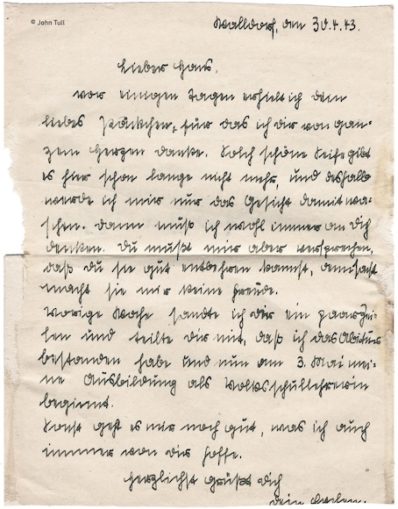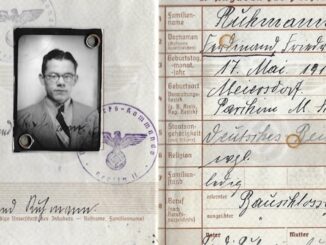In my last series of articles (Desert Mystery – Letters from Afrika), I described what had happened to a German Afrika Korps driver, Hans Walden, during the WW2 Desert War through the translation of the FeldPost letters that he had sent to Hildegard Bronnold.
To translate them, I started by scanning the originals, so as to avoid damaging them and causing any further deterioration, as they are now over 80 years old and fragile. Then I used photo-editing software to alter the scanned image to enhance the legibility of the writing especially when zoomed up. Next, I had to transcribe the German text into an MS Word document so that I could then correct it for any transcription errors by using the built-in German spelling and grammar check. Hans wrote in a mixture of Kurrent and Normalschrift cursive scripts which are reasonably easy to decipher with practice although similarities in how some letters were formed like “u” and “n”, and “s” and “r” as well as his adding extra flourishes to capital letters did make for some difficulties.
Once having a decent German transcription, the next step was to translate it into English using online translators such as Google. This does have the drawback of sometimes making the result too Anglicised. So, rather than translate whole paragraphs, I translated sentences and part-sentences at a time, based on the original German punctuation, trying to keep the inflection and predication close to the original language. Doing this incidentally made me realise that in Star Wars, Yoda is actually speaking English as if it was German.
Amongst my collection of FeldPost, I have however some written in variations of Sütterlinschrift, a Gothic type of script, which was the primary script taught in German schools in the 1930s until banned by the NSDAP in 1941 in favour of using script based on Latin-type letters. Using the above approach with Sütterlin and similar became a somewhat more laborious task to get to a reasonable transcription.
To overcome this, I have experimented with using two types of AI software available as websites on the internet. The first is “Transkribus” for transcription. To use Transkribus you first upload an image of the letter written in an old German script. The software then scans the letter and using, I believe, an image or character recognition method that allows for a wide range of variation, it produces a transcribed output in modern German. The clearer and more distinct the image, the better the output although Transkribus will attempt to extrapolate from a more indistinct image what the modern German equivalent could be. Having done this, I copied the output into an MS Word document.
The next step is then to translate and, rather than Google, I used “DeepL”. By copying and pasting in German text into DeepL, it gives you a translation into English both as a “most likely” and “alternative” versions. It also has a dictionary so you can look up individual words and consider alternative translations based on frequency of usage.
My own German is very limited, based on what I picked up when working in Dusseldorf and Frankfurt many years ago, so to translate a typical letter in the easier Kurrent or Normalschrift scripts originally took me around 8 to 16 hours but with practise it now takes me about 3 to 4 hours.
To answer the question, “Does using AI software work?” I used as a test piece the following letter to an Afrika Korps soldier Hans Coutandin, written by his girlfriend Eva Möller.

© John Tull 2025, Going Postal
Using “Transkribus” and “DeepL”, the first pass took about 15 minutes to get about 95% completion with less than an hour to resolve the few words remaining and to then refine the readability of the translation:
“Walldorf on 30th April 1943
Dear Hans,
A few days ago I received your dear little bag, for which I thank you from the bottom of my heart. Such beautiful soap has not been here for a long time, and that is why I am only going to wash my face with it. Then I must always think of you. But you have to promise me, that you can do well without it, or it does not give me any joy.
Last week I sent you a few lines and told you that, I had my School leaving examination passed and now on 3rd May, my training as a primary school teacher begins.
Otherwise I am still fine, which is what I hope for you.
Best wishes to you,
Your Evchen” [Little Eva]
So using AI software for transcription and translation works and saves time but there is the risk of ending up with a translation that is too Anglicised and loses the character of both the original language and the “voice” of the author.
Will I use them again? For Sütterlinschrift, yes. For anything else no, for having the time to take a more leisurely approach gets me into understanding more of the person who wrote the letters and of the time they were written. Currently, I am working through a 24 letter sequence of FeldPost from this soldier, Hans Coutandin (sent out as a reinforcement after Operation Torch), to his girlfriend and I have a 39 letter sequence from another Afrika Korps soldier to his wife for future translation. Depending on what I find in them, these may then be the basis for future GP articles.
© John Tull 2025



